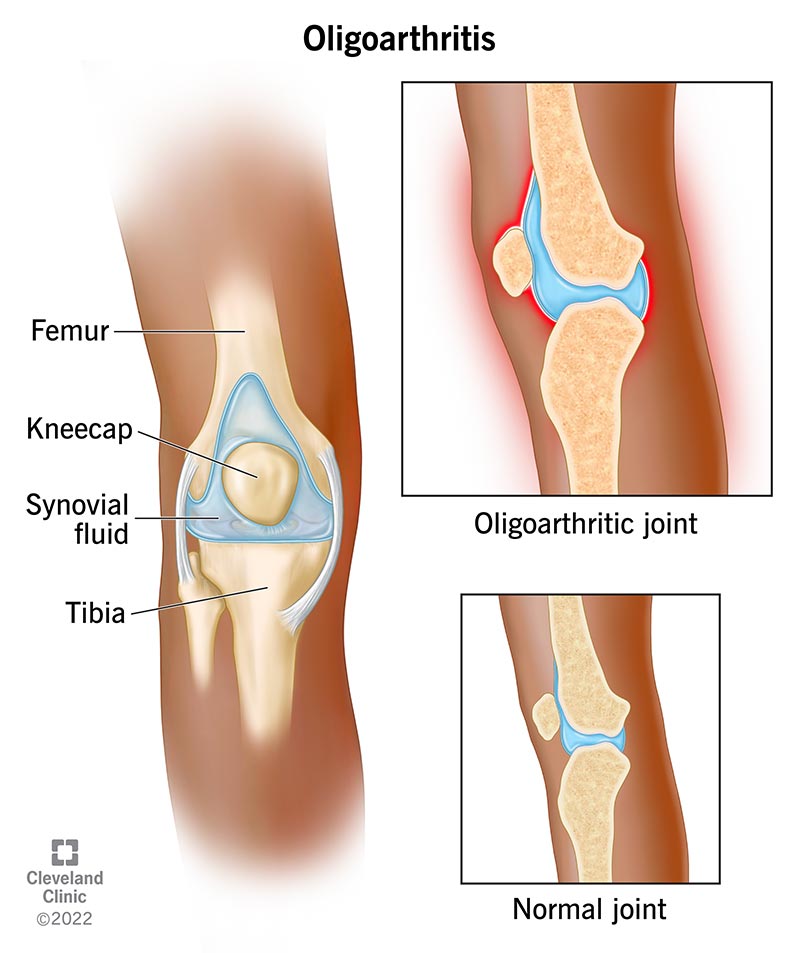Oligoarthritis is characterized by joint stiffness and swelling, most commonly affecting large joints such as the knees, elbows, and ankles. It is diagnosed in children and teens under 16 years old. While some cases resolve over time, others may progress and spread to new parts of the body in adulthood. Treatment significantly reduces symptoms and prevents joint damage.
What is oligoarthritis?
Oligoarthritis, also known as oligoarticular juvenile idiopathic arthritis, is the most common type of juvenile idiopathic arthritis (JIA). The condition causes joint inflammation, stiffness and pain in large joints of the body, specifically the knees, ankles and elbows as well as the middle layer of the eye (uvea).
In Latin, “oligo” means “few”. If you have oligoarthritis, you have fewer than five joints affected with arthritis.
What are the types of oligoarthritis?
There are two types of oligoarthritis based on how many joints are affected over a period of time:
-Persistent oligoarthritis: Four or fewer joints affected with arthritis after six months.
-Extended oligoarthritis: More than four joints affected with arthritis after six months.
Who does oligoarthritis affect?
Oligoarthritis is a juvenile condition that affects children and teenagers. It more commonly affects children assigned female at birth, but anyone can get the condition.
How common is oligoarthritis?
Oligoarthritis is the most popular type of juvenile idiopathic arthritis (JIA). An estimated 4 to 16 in 10,000 children have JIA in North America and Europe. Approximately half of all children with JIA have oligoarthritis. Up to 20% of people diagnosed with oligoarthritis also have uveitis (eye inflammation).
How does oligoarthritis affect a child’s body?
Oligoarthritis is an autoimmune disease. Your child’s immune system defends their body from foreign invaders like viruses, germs and bacteria. When they have an autoimmune disease, their immune system isn’t sure what’s healthy and what’s an invader, so it attacks their body’s cells and tissues in the same way it would attack a virus, which causes symptom.
In the case of oligoarthritis, your child’s immune system targets the tissue around a joint (synovium) as though the tissue were an invader. Your child’s body normally releases fluid to cushion your joints to facilitate movement. When their immune system attacks their synovium, their body produces more of that fluid, which causes joints to swell or become larger. This swelling causes symptoms of oligoarthritis, making the joint stiff and uncomfortable.


